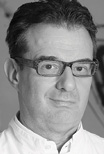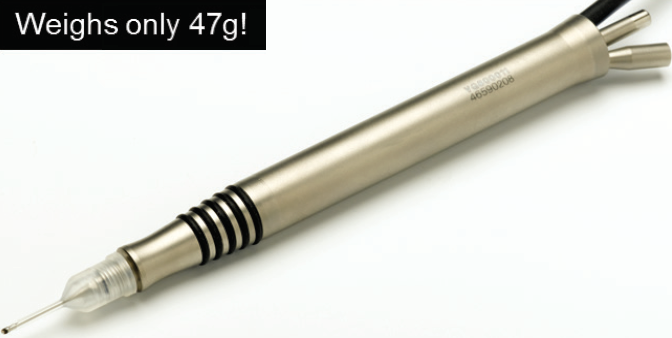Sponsored By


The most commonly performed surgical intervention in the human eye, cataract surgery is increasingly becoming standardized. Advances in techniques and technologies have made it possible for us to reduce the size of our incisions, to decrease the amount of energy and fluids we use inside the eye, and, as a result, to improve outcomes for our patients. Now we also use smaller surgical kits, as fewer instruments are required during surgery, and we have access to more devices that can help us to achieve very safe surgery, both rapidly and efficiently, throughout the day.
WORKFLOW IS PARAMOUNT
When it comes to efficiency, workflow is paramount. Of course workflow encompasses many different aspects of cataract surgery, including operating room staff, the setup of the operating room, instrumentation and other devices, and the surgery itself. I have standardized the way in which I perform cataract surgery in attempt to increase workflow. In short, I perform what I call visco-phacoemulsification, injecting OVD into the anterior chamber that remains largely during phacoemulsification by using only fluidics in the capsular bag.
The largest benefits to the visco-phacoemulsification technique are that it reduces the movements in the eye to a minimum and that it decreases the amount of fluid in the eye. I hold the lens with the phaco tip most of the time using what I call an always-microocclusional technique, rotating the lens with the phaco tip like a wagon wheel. I also create only microocclusional breaks by holding the lens with the phaco tip and then pulling it immediately back. I do not sculpt or carve the lens, I simply rotate the lens out.
TECHNOLOGY PLAYS AN INTEGRAL PART
Technology also plays an integral part in creating a successful workflow. For many years I relied on the CataRhex SwissTech phacoemulsification system (Oertli Instrumente, Switzerland), and I upgraded to the company’s CataRhex 3 technology (Figure 1). Both systems are excellent; they are truly products of Swiss precision technology.

Figure 1. CataRhex 3, made by Oertli in Switzerland.
What I like specifically about Oertli’s phaco machines is that they are very reactive to what I do. As I mentioned before, I like to keep the lens at the phaco tip rather than having the phaco tip go toward the lens, and the handpiece of the CataRhex 3 allows me to do this exceptionally well. Because the handpiece is extremely light (Figure 2), I can perform a more controlled surgery. Furthermore, by using the wider opening of the easyTip, I can keep a firm grasp of the lens throughout all maneuvers, thereby creating a very controlled and efficient phaco procedure. The opening of the easyTip (Figure 3) allows me to hold pieces of the nucleus firmly, and I can therefore complete my microocclusional breaks inside the tip rather than outside the tip (Figure 4). With these tools, it only takes a few seconds to emulsify the lens nucleus by rotating it in. The lens comes to the tip, not the tip to the lens.

Figure 2. The phaco handpiece of the CataRhex 3.

Figure 3. With the easyTip, there is excellent followability and holdability.

Figure 4. Comparison of the easyTip (top) and a standard phaco tip (bottom).
When I first used the CataRhex 3, I immediately noticed that its reaction is extremely sensitive. I was amazed that I could reduce my total effective phaco time and the total amount of fluidics even more than I had before with the CataRhex SwissTech. Now I can use around 30 to 40 mL of fluid for an entire case because I do not break occlusion as often and because the total fluid movement in the eye is consistently reduced to less than 50 CC.
CONTROL DURING SURGERY
From every aspect, the CataRhex 3 system is designed to maintain optimum safety while working with the highest values. However, it also works well in medium to low settings, which are what I prefer for my special technique. Whether one uses high, medium, or low settings, surgery will still be very effective without disturbing any of the important ocular tissue.
In terms of very hard nuclei, the only time I do not perform visco-phacoemulsification is with a grade 4+ nucleus. In these cases, I prefer a chop technique. The CataRhex 3 and the easyTip are also effective in this setting because I can enter the nucleus with the phaco tip and still hold it without pushing it away. These things allow me to control surgery even in hard cataracts.
THE PROOF IS IN THE POSTOPERATIVE RESULTS
Because the CataRhex 3 has helped me to reduce not only effective phaco time but also the total surgical time, the eye actually looks even better the day after surgery. The corneas are clear, even in harder lenses, and the eyes are very quiet the next day. Also contributing to the pristine postoperative outcomes is the fact that I can reduce the amount of fluidics that I need as I move through the eye with my visco-phacoemulsification technique. Furthermore, I have noticed that, with the CataRhex 3, there is less intraoperative trauma to the eye, which also helps to boost postoperative outcomes.
I am continually impressed with the capabilities of the CataRhex 3 system. Like in a car, when you are deciding on an upgrade to your phaco system you look for all the little details that can improve not only convenience but also improve postoperative outcomes. Some of these details with the CataRhex 3 include the fact that all the reloading for the next case can be done from the front of the machine, and it can be done by a nurse in the operating room. There is no longer need for a second person to help because it is now an all front-loading system.
Another element that I like about the CataRhex 3 is that it is lightweight and ergonomic. Because I work in different surgical settings and across multiple surgical sites and even in different cities, one of the major advantages of the CataRhex 3 machine to me is that it is truly portable and even fits into a pilot case (Figure 5).

Figure 5. The CataRhex 3 can be packed in a pilot case.
CONCLUSION
The benefits of the CataRhex 3 phaco machine are plentiful. Specifically what I enjoy about this technology is that it allows me to improve my workflow, improve my surgical efficiency, and improve my patients’ postoperative outcomes. The design of the easyTip helps to create excellent followability and holdability, and it facilitates the occurrence of microocclusional breaks inside rather than outside the tip.
Disclaimer: Oertli, CataRhex 3, and easyTip are registered trademarks of Oertli Instrumente AG, Switzerland.
© 2017 Oertli. All other brand/product names are the trademarks of their respective owners.



